This article was published on 14.04.2023 and updated on 12.03.2024.
I take you with me on the "Hiwweltour Neuborn", we will discover nine herbs and the varied surroundings of Wörrstadt and Rommersheim together along the way. These are native plants that we can find everywhere in the fields and meadows - or in the wild corners of our own garden. You'll also get some ideas on how the fresh greenery can be quickly and easily turned into a tasty dish in the kitchen. You probably know most of them, but not everyone knows what energy they have in store for us after a long winter.
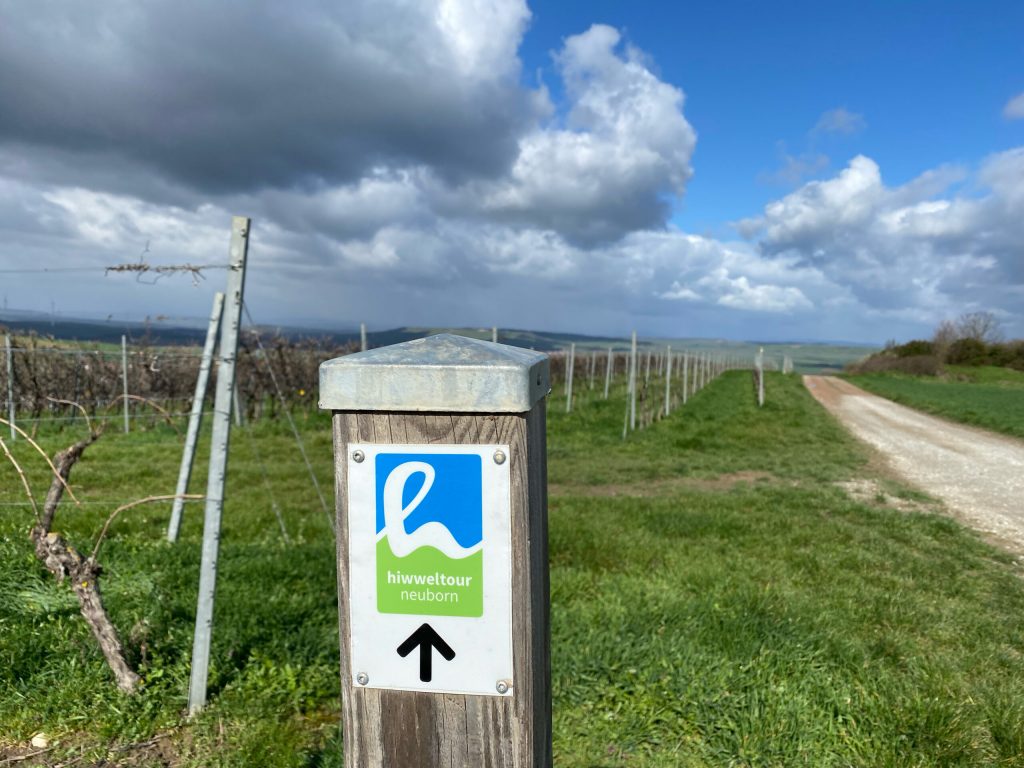
But what is it about the "nine herbs"? The phrase has different origins, one tradition says: nature is kind to us nine months, the three winter months often meant hunger and malnutrition in the past. The first fresh green after winter was celebrated with the traditional "nine herbs soup". Each region offers us different herbs, so the composition of the "Green Nine" can vary and is not uniformly determined. Often the green vitamin bombs grow unnoticed by the wayside and are called "weeds" or we try to drive them out of our tidy gardens.
The green "superfood" drives away with its vitamins, minerals and bitter substances, all from the fresh counter of nature. of nature. But please be sure to note: Only for personal use is picking a small amount (what fits between thumb and forefinger - "hand bunch rule"). "hand bunch rule") is allowed. If you are not sure how to identify the plant an identification book or an identification app will help. In case of doubt it is better not to consume! It should also be noted that no plants may be picked in nature reserves are allowed to be picked. It is recommended not to pick herbs directly directly at the roadside or at contaminated and intensively cultivated crops. collect.
So, let's go over the Hiwwel in the Rheinhessen Wörrstadt!
Our hike on the Hiwweltour Neuborn begins at the parking lot for hikers at the Neuborn. The meadow path leads us past the Neuborn Bath, here I already discover the first wild herbs. The "Great nettle" (Urtica dioica)and the "Little nettle" (Urtica urens), also called thunder nettle, show their fresh green at the wayside.
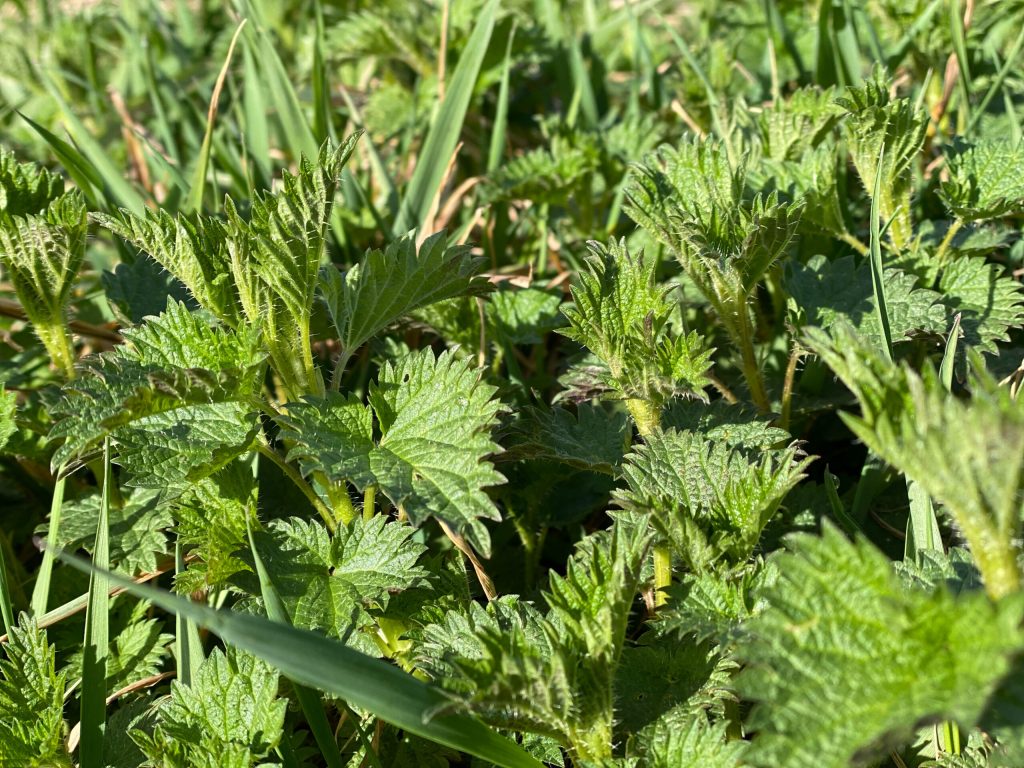
The plant protects itself from predators with its stinging hairs, the slightest touch causes burning and itching (mix of histamines, formic acid and acetylcholine). Butterflies don't mind, as it is an important food plant for over 40 species of butterflies. The admiral, peacock butterfly, lesser fox, and land moth depend exclusively on the nettle. Without nettles, no colorful butterflies! But how is it used in the kitchen? The leaves of the herb vegetable can be processed like spinach, but are also very tasty in smoothies. It is the ideal detox partner for spring and can lower blood sugar levels.

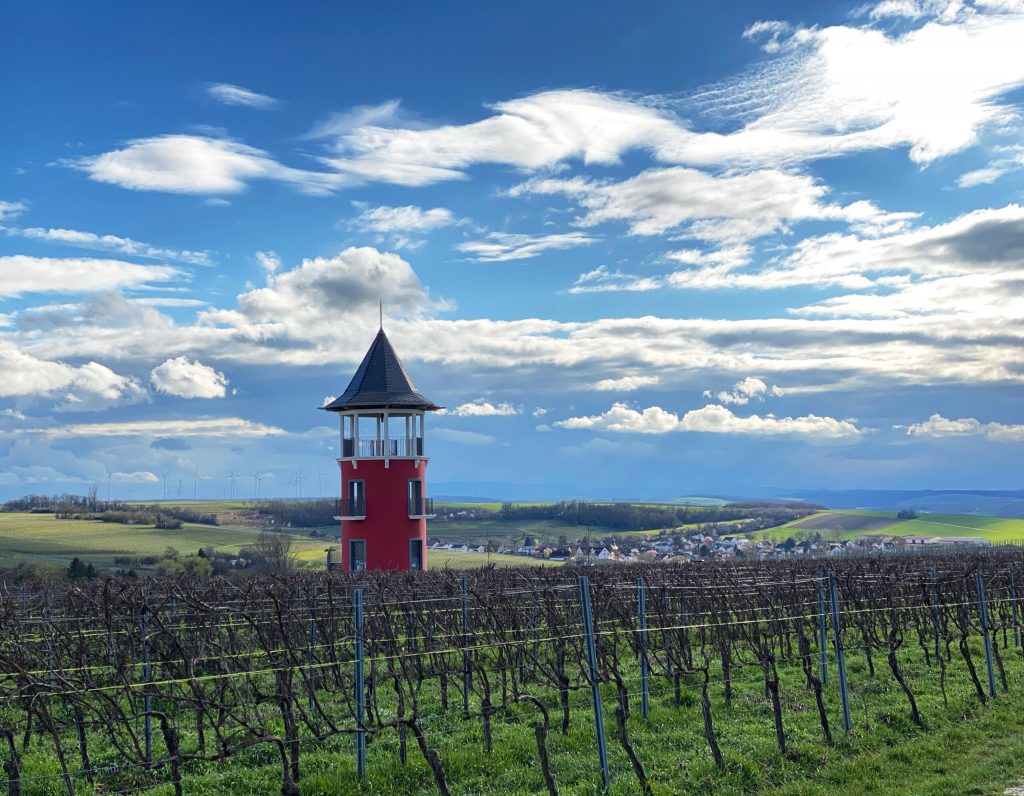
The Burgundy Tower can already be seen in the distance. Like a lighthouse, it stands out among the vines in its strong red color. It owes its name to the partner region of the same name. Through the grassy paths we approach the most prominent point on the Hiwweltour Neuborn, at the edge of the path are eagerly winding the shoots of the Chickweed (Stellaria media).
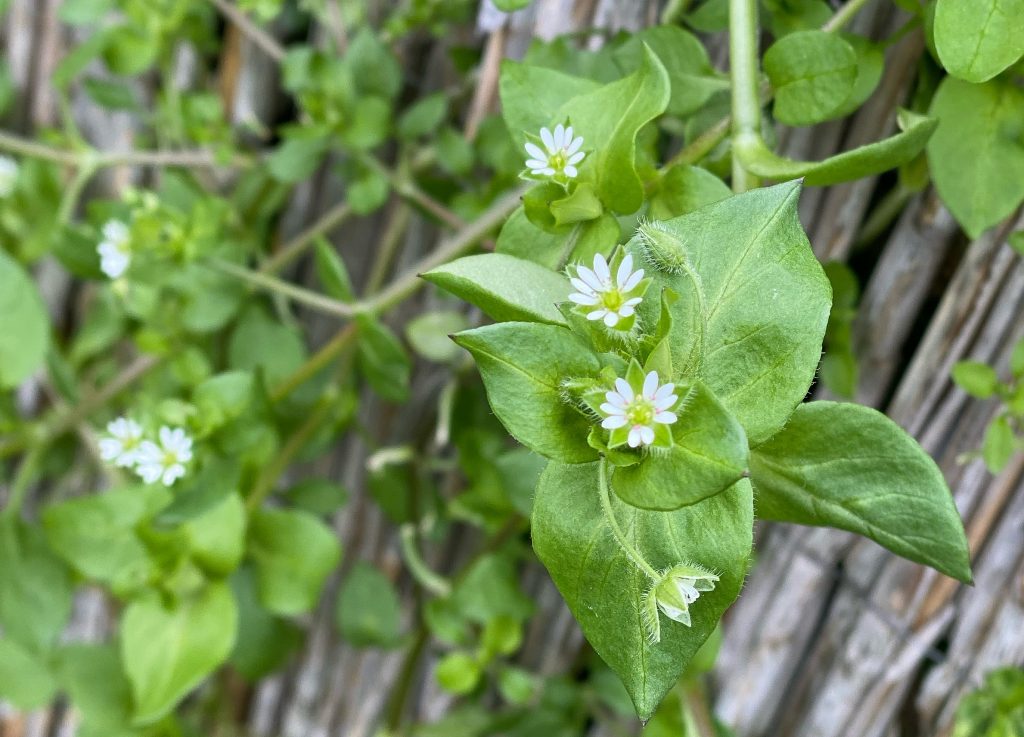
Discoveries on the Hiwweltour Neuborn and a delicious chickweed pesto
Everyone knows the widespread clove plant with the small white, star-shaped flowers. Chickweed even stretches through thin layers of snow and shows its flowers from March to October. It rids you of toxins and its high vitamin C content is a superfood for smoothies and salads. I have prepared a pesto for you, feel free to try it....
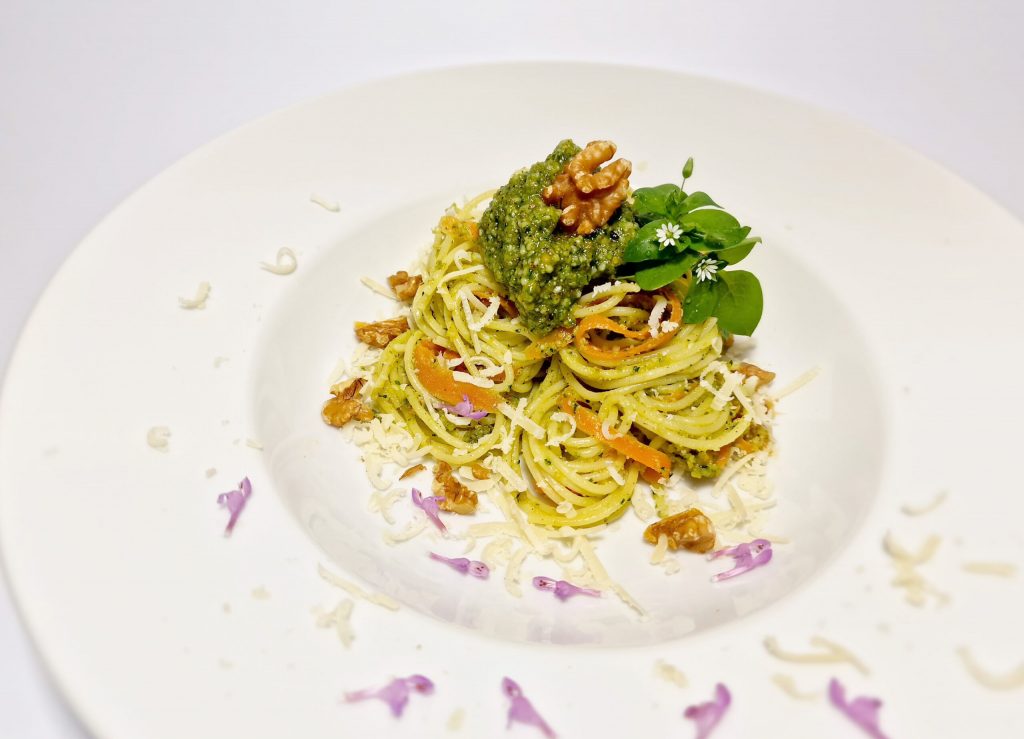
Chickweed pesto with spaghetti
Cook spaghetti until al dente, peel about 10 sticks from a carrot and simmer the latter for 3 minutes, add about 1 tbsp. olive oil.
In parallel, grind a bunch of chickweed and a handful of walnut kernels, a clove of garlic, olive oil, Parmesan cheese, herb salt and freshly ground pepper in a blender and blend to a creamy paste.
If the vines are still in the last throes of winter dormancy, the Purple deadnettle (Lamium purpureum) or also called "beet nettle", in almost every Wingertszeile very overzealous. It is not among my selection of the "Green Nine", but I used the edible flower as a decoration.
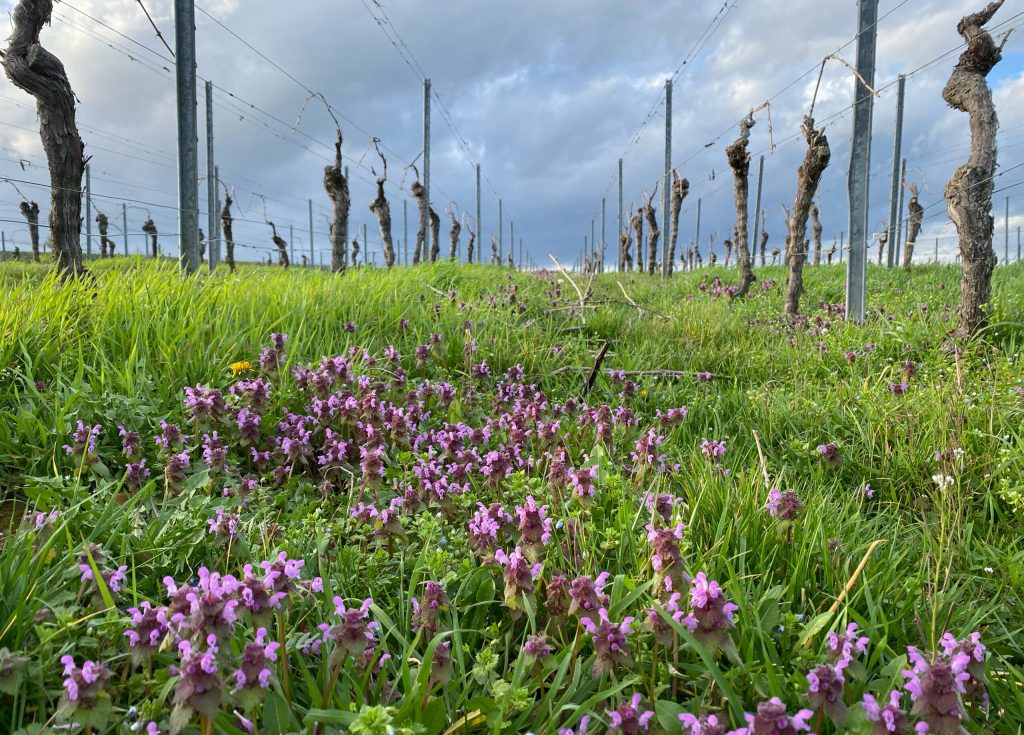
Continue on the route through the vineyards, down the Hiwwel to the rest area "Beautiful view". The place lives up to its name, a sign shows the surrounding mountains and regions; up to the Erbeskopf, Donnersberg and Wißberg can be seen in good weather the very big Hiwwel on the horizon.
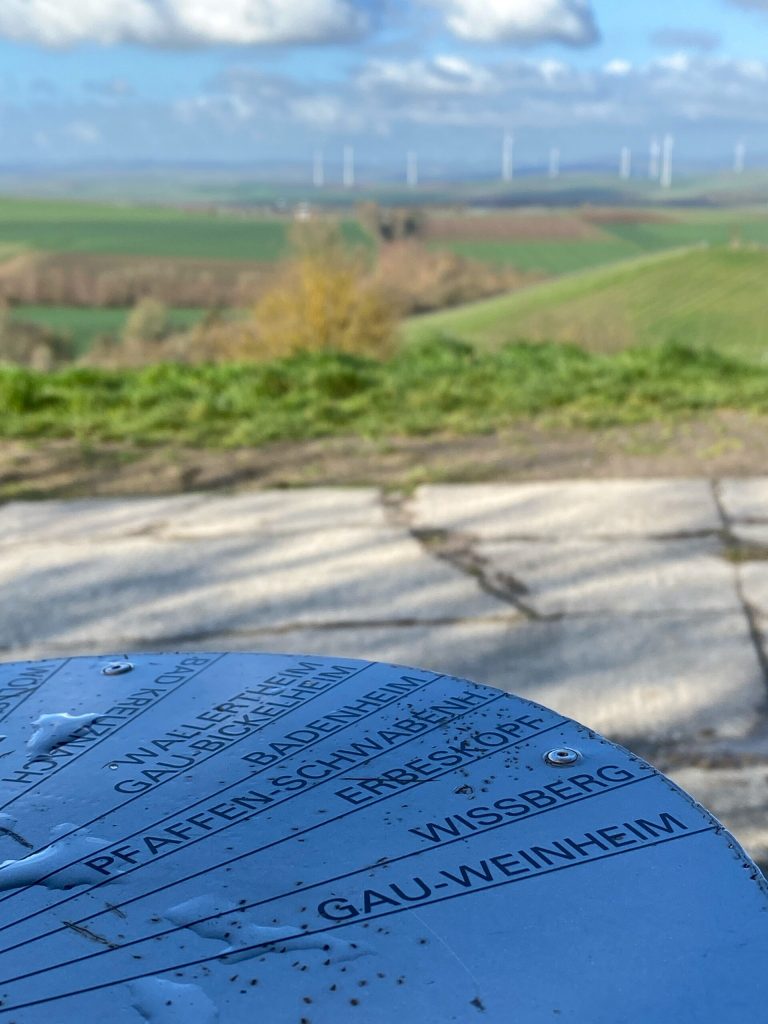
Probably the best known member of the "Green Nine", the Daisies (Bellis perennis), curiously stretches its flowers towards the sun; at night and during rain its inflorescence is closed. It bears a variety of names: The Eternal Beauty, Measure Lily, Centaury, Little Mary Flower, and Sun Eye are just a few. The flowers are a vitamin-rich and tasty ingredient in wild herb dishes, tasting nutty and the leaves slightly pungent. The hardy daisy can also be made into daisy honey or tinctures and tea.
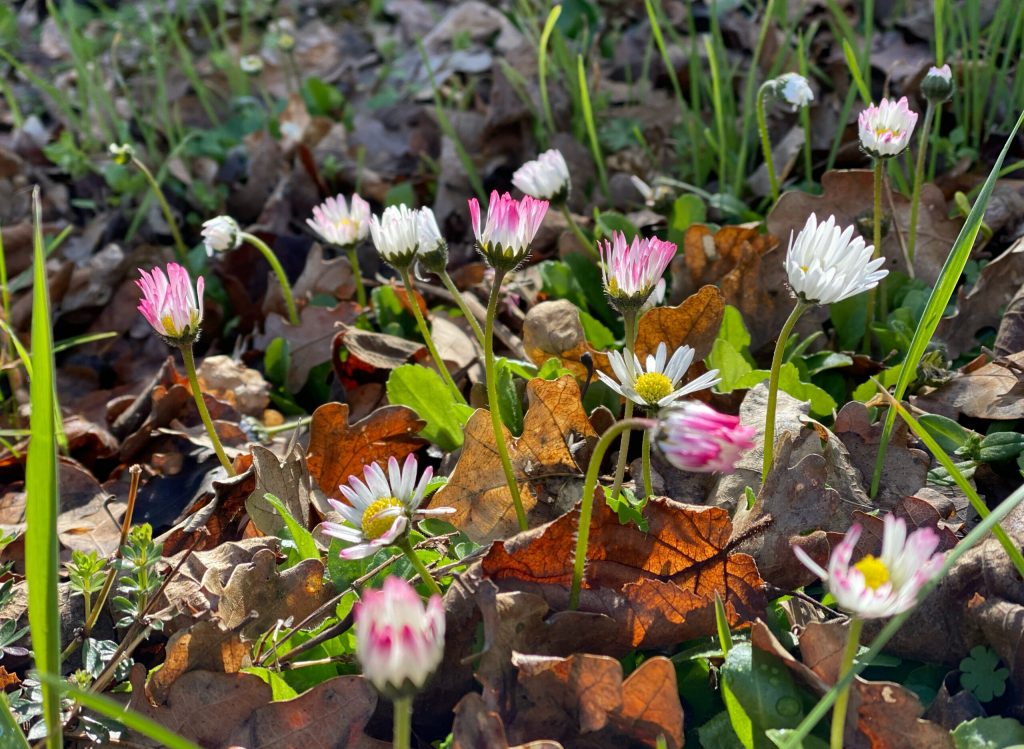
Pleasant detours and healing herbs: ribwort and yarrow on the Hiwweltour Neuborn
Now it's down the Hiwwel with great views over vineyards, always the next viewpoint in sight. A small detour to the "Vineyard house Perka" gives a view of the expanse of Rheinhessen's hilly landscape. Here I discover at the edge of the vineyards abundant Pointed plantain (Plantago lanceolato). It also has many names: King of the wayside, lung leaf and wayside footstep.

The leaves of ribwort plantain can be added to wild herb dishes, pesto and salad all year round. The taste is somewhat bitter and tart. Its flowers are not currently visible, we can only see the lush green leaves bushy up in the spring. It is a classic lung and cold plant, which can also strongly stimulate the self-healing powers. On the road on hikes, it is a 1st aid plant as a meadow patch, anti-inflammatory and hemostatic. Its fruit stand is the well-known psyllium, which can relieve stomach and intestinal cramps.
Also in fresh green is the Yarrow (Achillea millefolium). "Thousand-pinnate" or "Eyebrow of Venus" describe its fine, feathery leaves. Again, the flower is not yet visible in April. This meadow and pasture plant is an asset in any salad or on buttered bread. In herbal medicine it helps with women's ailments.
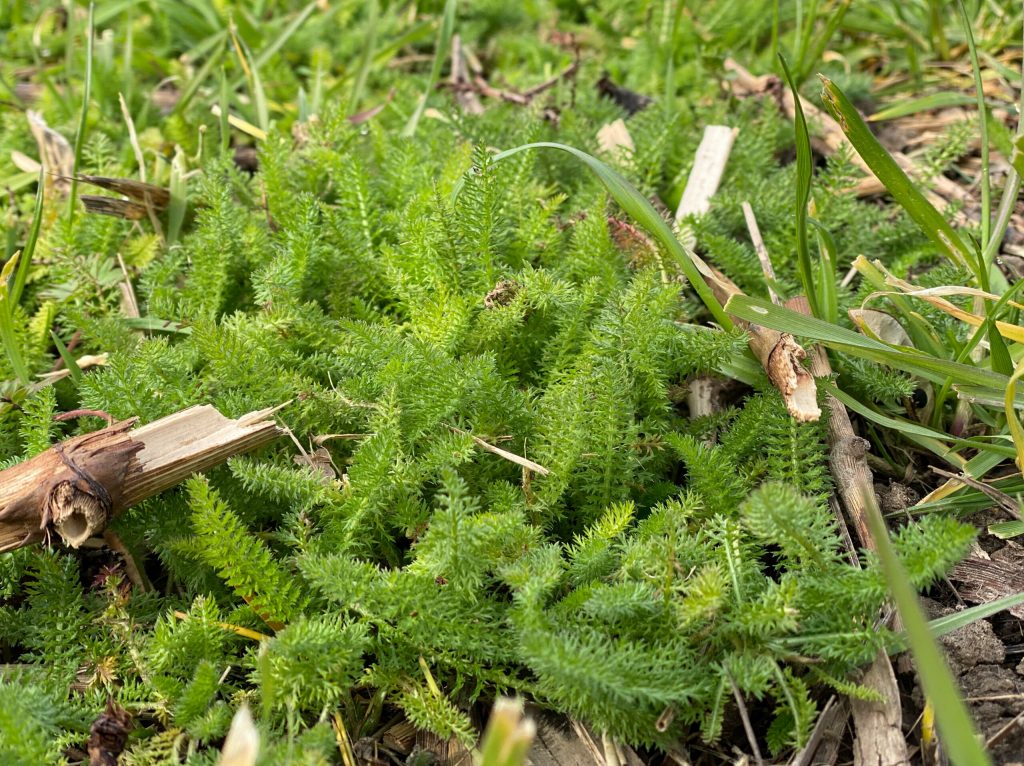
On the Greifenberg: from the table of wine to the variety of herbs and exotic feathered fowl
Now we hike to the "Table of wine" on the Greifenberg, here the rest area invites you to an extensive vesper. Of course, this must be captured with a souvenir photo in a picture frame. At this mystical place, a robber baron's castle is said to have stood in days gone by... But that's just speculation.
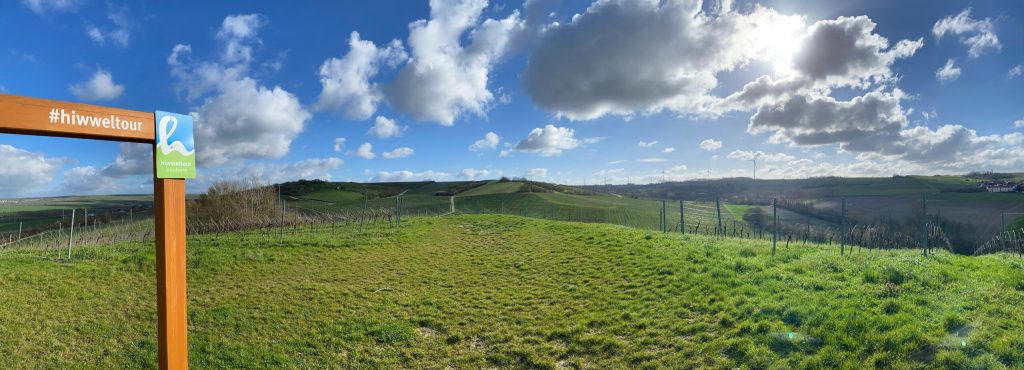
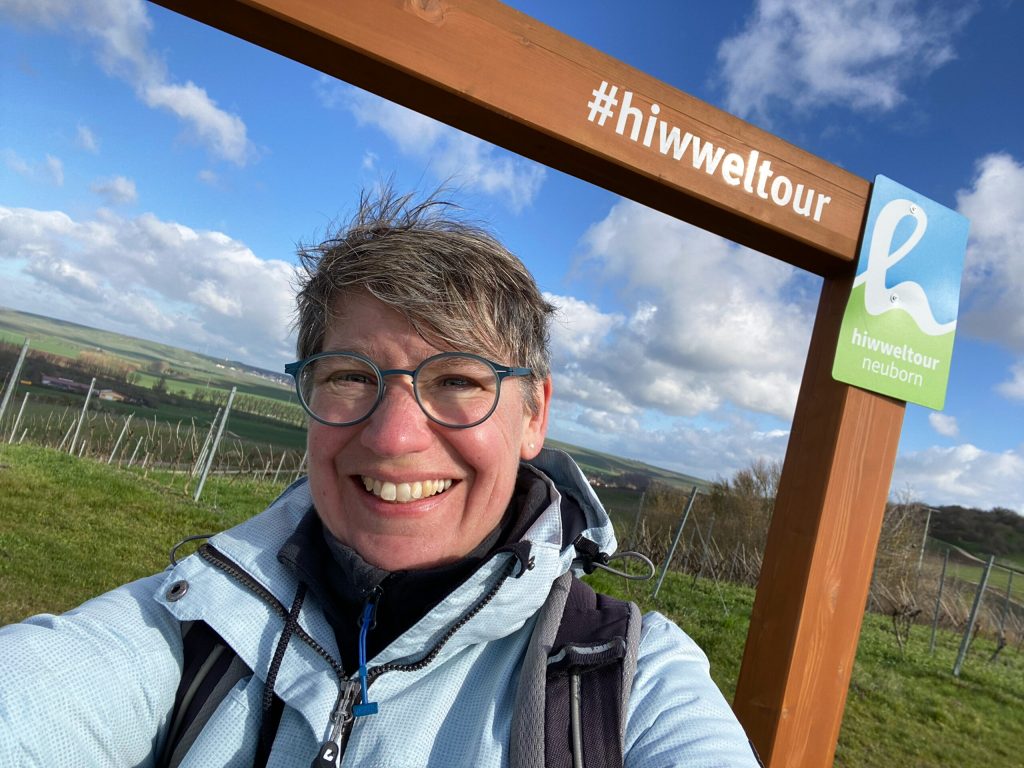
The path leads us down from the Hiwwel through a small wood, past a pond. We walk past gardens and all kinds of feathered fowl. The is a highlight of the tour, especially for children. the pack of upright waddling ducks, the chickens and the nandus.
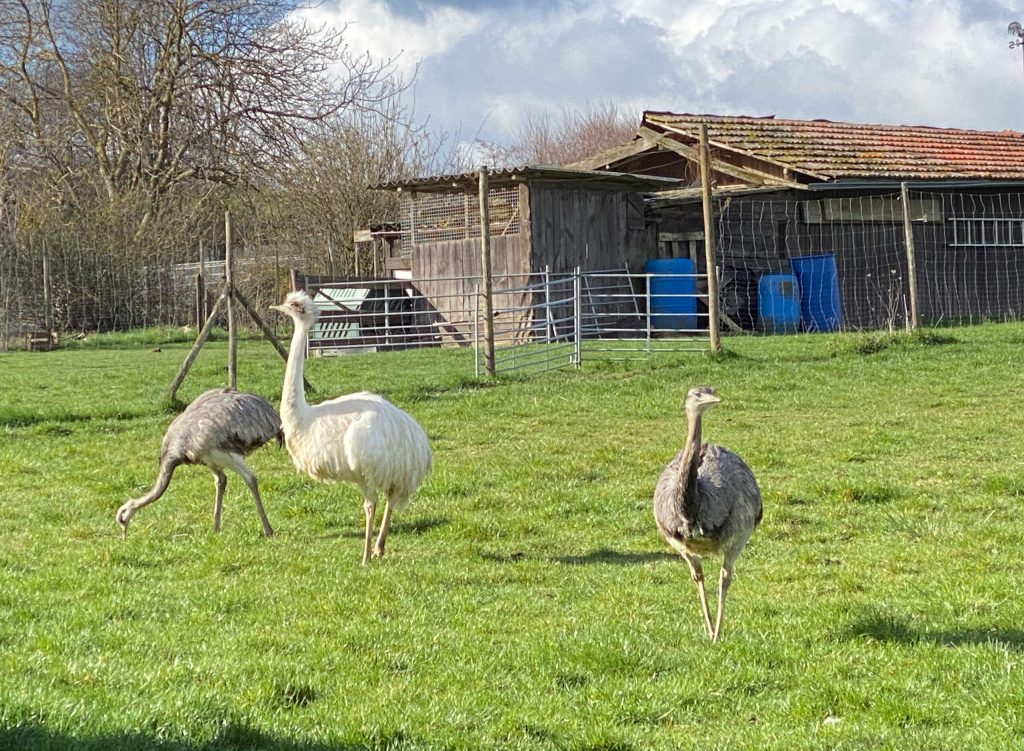
And already I encounter the next herbs along the stream. The Goutweed (Aegopodium podagraria), also called "Zipperleinskraut", has sought a shady spot. It feels particularly at home at the edge of the forest and on fallow land. "The gardener's horror" is its reputation. Once you have it in your garden, it's hard to get rid of. Its rhizomes permeate the soil and new plants pop up everywhere. But the young leaves taste great raw in salads and smoothies, and are rich in vitamins and minerals. Boiled or steamed it tastes good in soups, stews, sauces and with scrambled eggs. In folk medicine, it is considered a "gout healer", which is already shown by its name "podagra" = gout.
To avoid confusion, the mnemonic helps: "Three, three, three - you're with the goutweed!" (The leaf has three parts and is again divided into three parts, the stem of the goutweed is triangular). The stem shaft reminds of the foot of the goat.
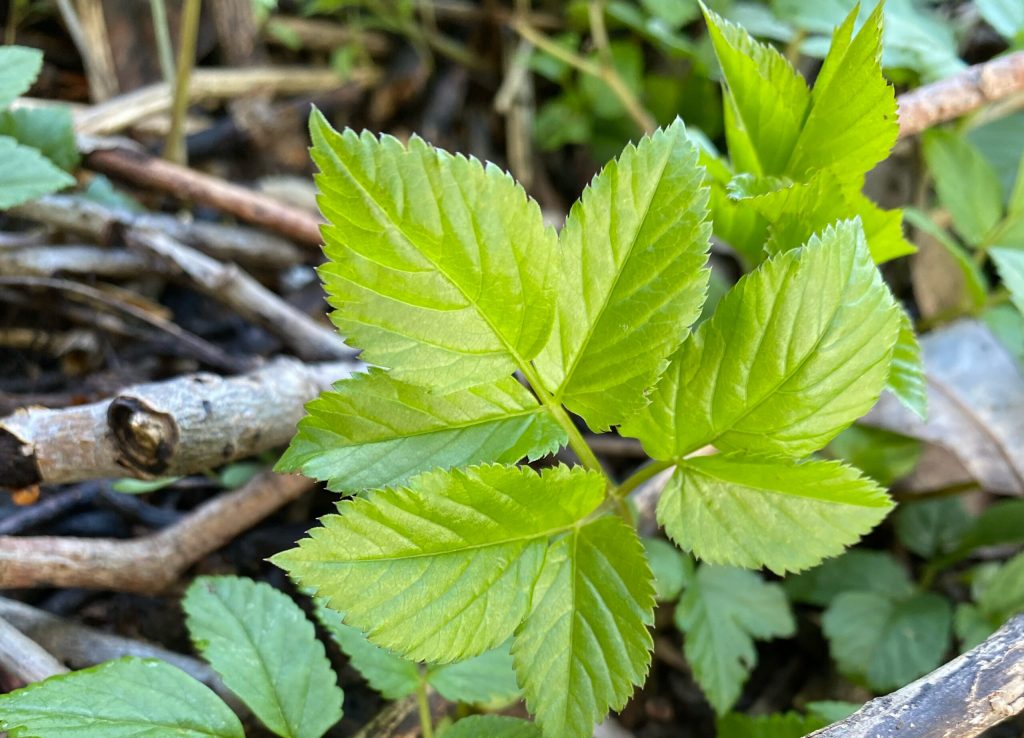
Here also feels the Meadow ragwort (Galium mollugo). The relationship to the woodruff can be seen. The bitter and tannic substances are fitness makers for spring and taste like young young pea. The herb refines arugula or lettuce, pesto, smoothies and soups. soups. It belongs to the dyeing plants, its root dyes red.
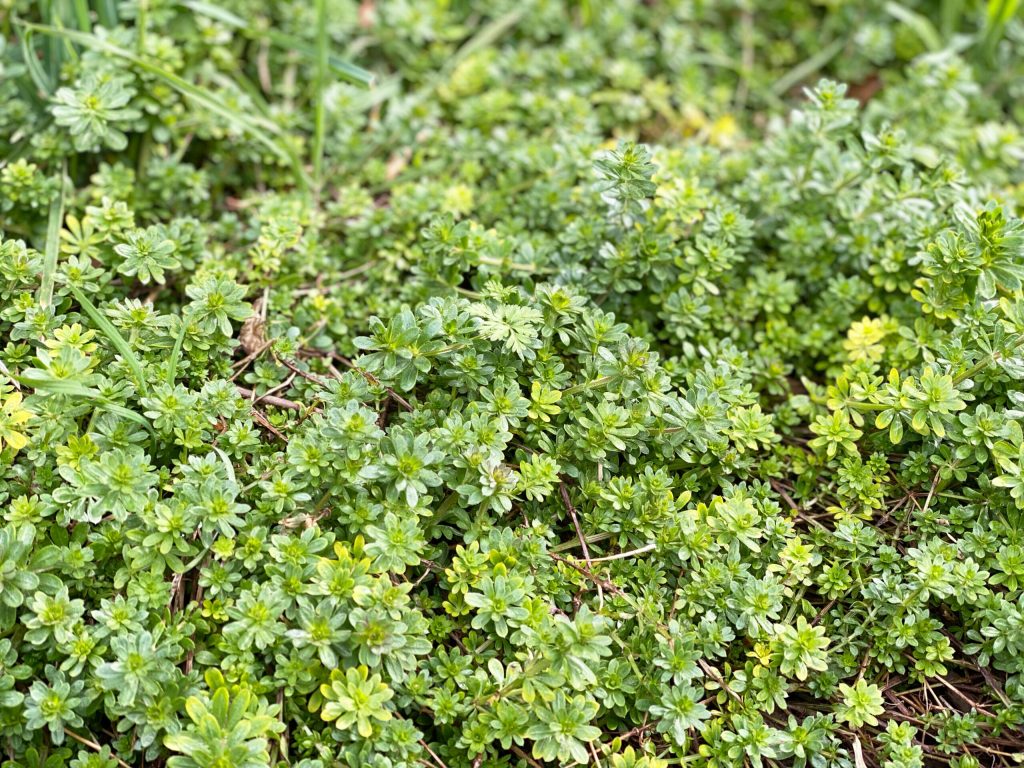
Now also shows the "Gundermann" or "Ground Vine" (Glechoma hederacea). Its purple flowers stretch towards the sun early in the year. The small heart-shaped leaves are very spicy in taste. Leaves and flowers are more to be used as a seasoning in salads, vegetable pans or herb butters. In order not to confuse it, rub the leaves together, you can recognize it by the intense aromatic scent. It is advisable to use the ground ivy rather sparingly. Bees and butterflies like to enjoy the nectar of the labiates and pollen.
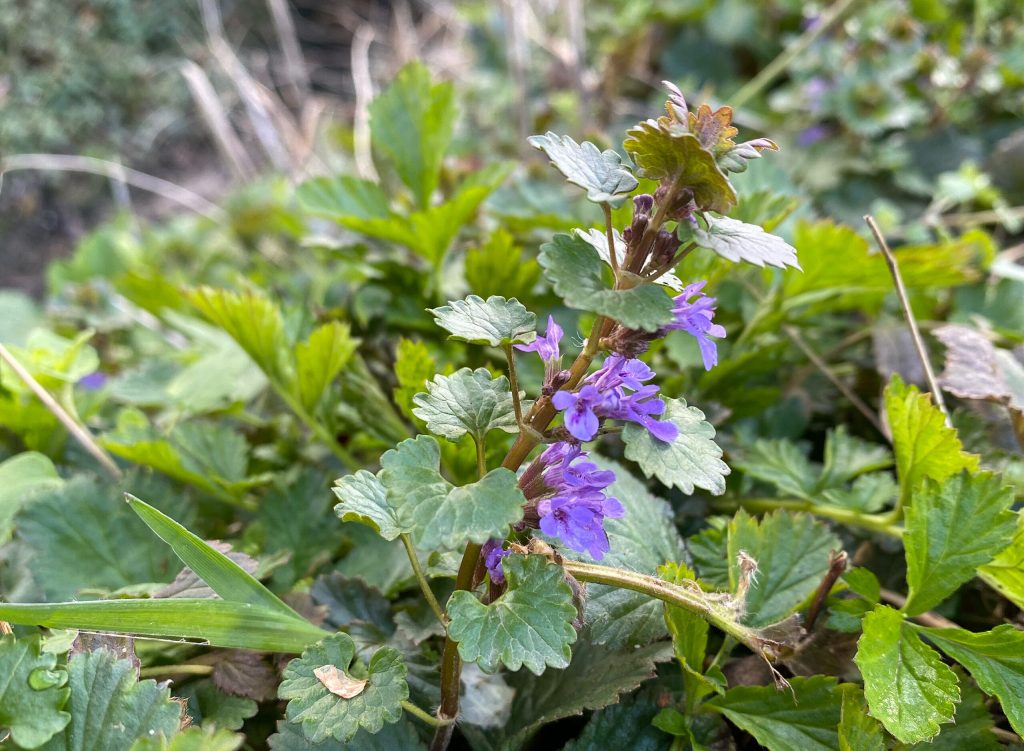
The path now leads me through the picturesque village of Rommersheim. At the church, a bench next to the small fountain invites you to rest. Freshly strengthened it goes out of Rommersheim again up to the next Hiwwel, to the Lorlenberg rest area. The views on the hike are simply fantastic and you can leave everyday life behind. On the horizon, the red Burgundy Tower is again in sight. The grassy path now leads on the hill along the vineyards to the Rommersheim stone cross. The chestnut tree already shows the first thick buds with the beginnings of leaves. Spring is in the starting blocks! A bench invites you to enjoy the view once again.
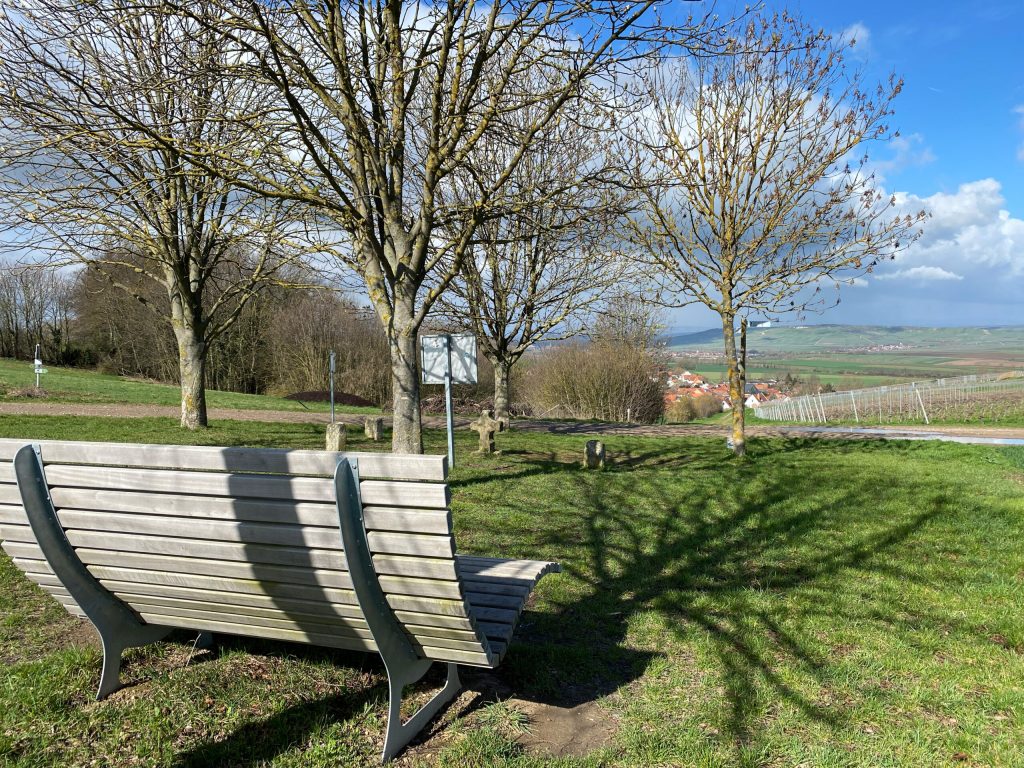
On the next stretch of the way we encounter the well-known known Dandelion (Taraxacum officinale), also known as dandelion. The leaves are still growing flat above the ground, on some plants you can already see a magnificent yellow flower can be seen. For a salad or delicious smoothie best to use the young leaves before flowering, otherwise they contain too many bitter too many bitter substances. When you break the flower stalk, a milky juice emerges, so you can use any juice emerges, so you can exclude any confusion. It is also called "Ginseng of the West", it is a super detox partner in spring and healthy for liver healthy for liver and digestion. The dandelion makes for rapid propagation, something that Gardeners find rather annoying.
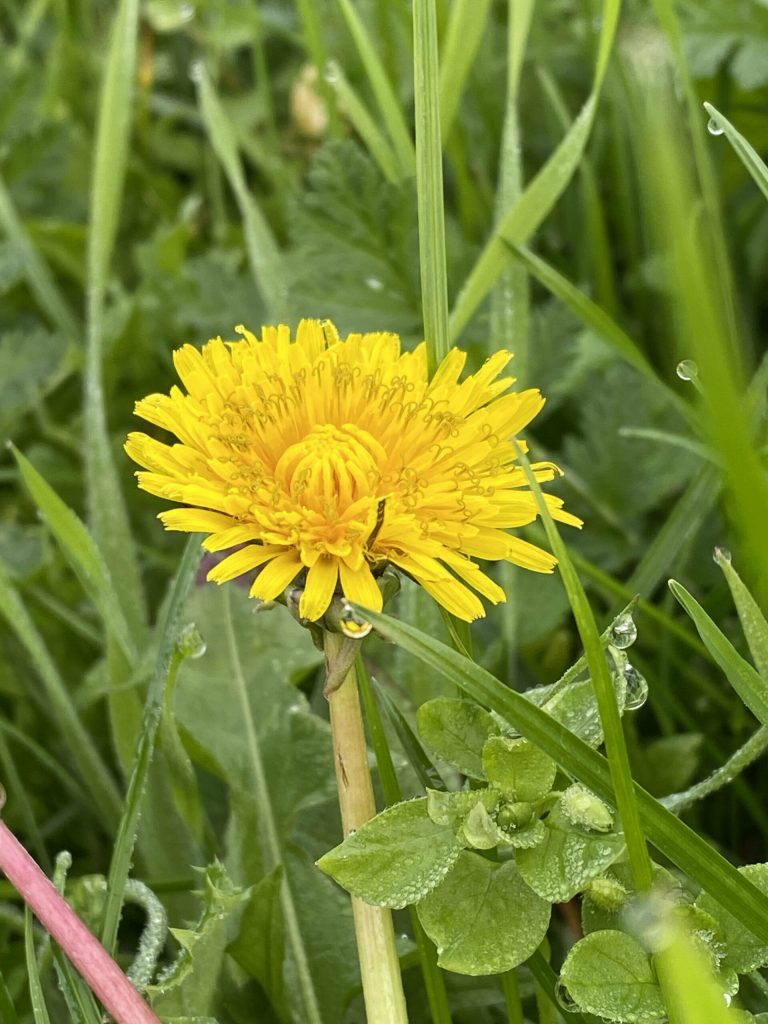
In the kitchen it finds a great use in smoothies. I have tested the following for you: A dandelion power smoothie - it drives away any springtime tiredness! You need: a handful of young dandelion leaves, a glass of buttermilk, a glass of naturally cloudy apple juice, a cored apple with peel, a peeled orange in pieces, some lemon juice and some beekeeper honey from Rheinhessen to sweeten. Grind all ingredients in a blender. Keeps chilled min. three days in the refrigerator in a glass bottle.
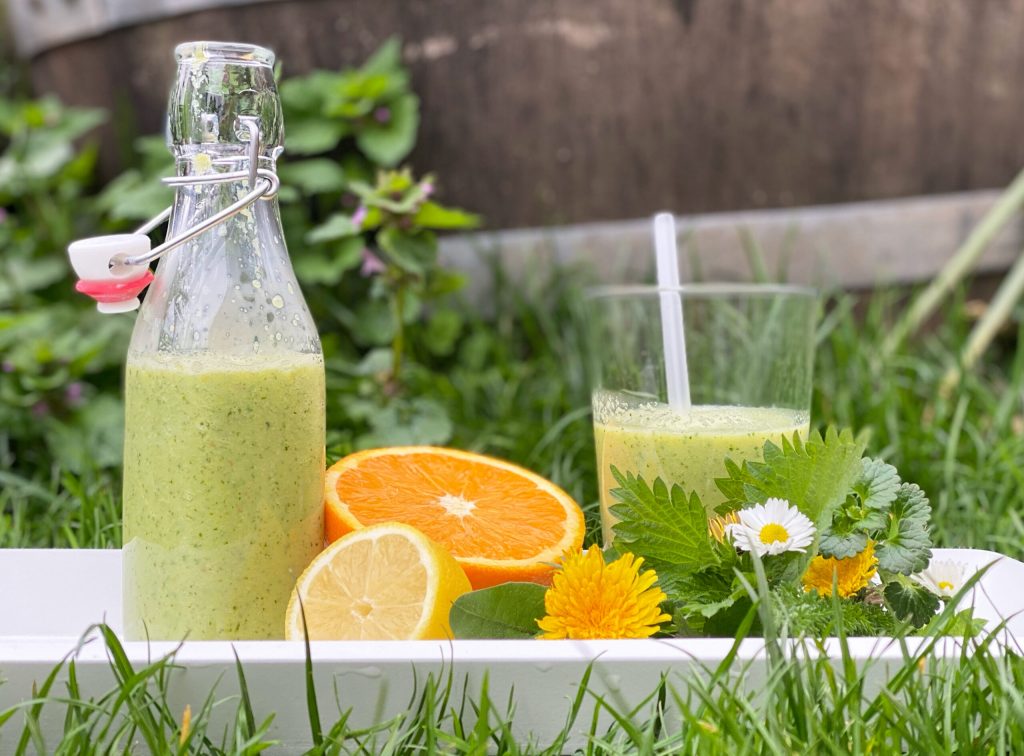
With renewed power, the last stage takes you through the forest, past the Neubornquelle and the grass frog nursery. That will be a croak... The trees are still bare, each warm day will make them a little greener.
Back at the parking lot, I gained many impressions and rediscovered nine green treasures of nature. A piece of wisdom by Sebastian Kneipp says: "One becomes indifferent to what one has in abundance; hence it comes about that many hundreds of plants are considered worthless weeds instead of being noticed, admired and used."
The "Hiwweltour Neuborn" is with a little over 8 kilometers in just under 2 ½ hours (without a break) to hike comfortably. A moderately difficult and varied route leads through forests, meadows and vineyards and past streams. Have fun hiking the Rheinhessische Hiwwel and using the green superfood...


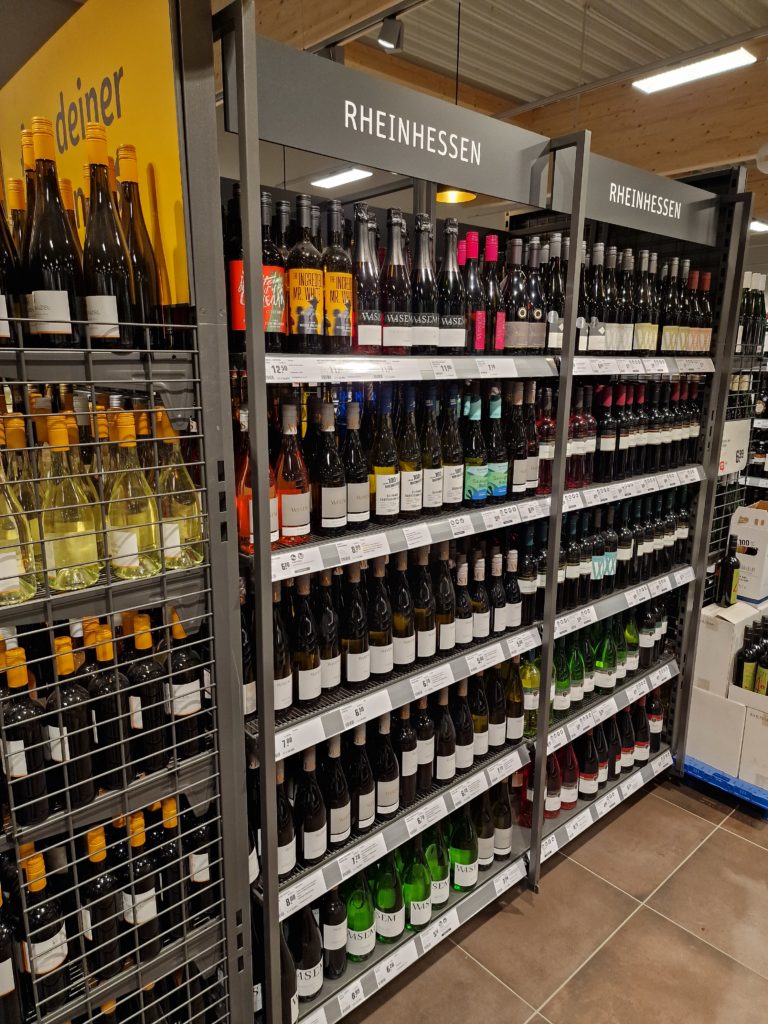
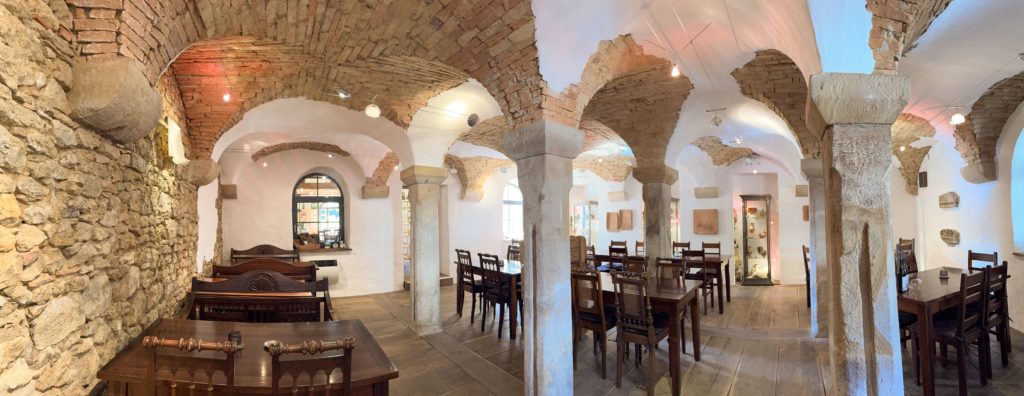
12 Responses
Dear Katja!
This blog is also super successful.
Very informative and interesting written. Great photos and recipes! Many thanks for that! Will we try everything, and one or the other little plant yet thrive in the garden. We will definitely try the tour soon. Looking forward to it... and also to your next blog!!! Have' now really good mood and will read this blog directly again ...
Hello Nicole!
I'm so glad you like the blog article 🙂 .
Have fun trying out the recipes and wandering about the "rheinhessischen Hiwwel"!
Thanks for the nice article, good description of the route and the plants along the way. Makes you want to go on the next tour.
Have fun hiking and exploring the plants, dear Simone!
Dear Ms. Zentel,
What a pleasure on a rainy Sunday to mentally go with you on your 'hike'. It really makes you want to travel to 'your' area for a weekend. Thank you very much ! And many greetings from Düsseldorf ! Your Martina Effmert
Hello Mrs. Effmert,
I am very pleased! Goal achieved - awakened desire for Rheinhessen 🙂
Many greetings from Nierstein
Hi Katja, great report and super photos . Looking forward to your next blogs. Very dear greetings
Hello Gabi, Thank you!
Dear Katja, super written! Great info about a tour of which I already thought to know everything like more of it!
Dear Uta, I will continue to explore Rheinhessen and share it with you 🙂
Great idea! Thanks for the article! We will take the path at the next opportunity once. I tried the dandelion smoothie right away. It was very tasty and has inspired me anew to try several such yet simple herbal smoothies soon.
Dear Kerstin, all Hiwwelt tours have their own special charm at different times of the year!
Freshly strengthened by the green power drink in's spring - that's great!!! Have fun hiking and tasting...